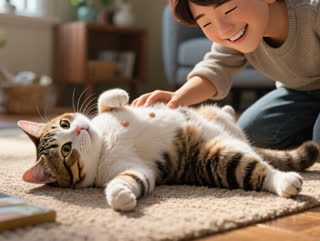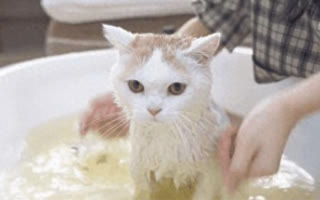1. Royal Nutrition: Fueling Your Cat’s Kingdom
Age-Specific Diets: Kittens need calorie-dense food with extra nutrients for growth, while senior cats benefit from easily digestible meals rich in glucosamine for joint health .
Hydration Matters: Wet food can help prevent urinary issues by increasing water intake. Pair it with fresh, filtered water to keep your cat hydrated.
Treats with Purpose: Limit treats to 5–10% of their daily calories and opt for healthy options like freeze-dried chicken or catnip-infused snacks .
2. Grooming: A Purr-fect Routine
Brushing: Long-haired cats need daily brushing to prevent matting, while short-haired breeds benefit from weekly sessions to reduce shedding and hairballs .
Nail Trims: Trim nails every 2–3 weeks to avoid painful overgrowth. Use a cat-specific clipper and reward your cat with treats afterward .
Dental Care: Brush teeth daily with feline toothpaste or provide dental chews to prevent tartar buildup and gum disease .
3. Health Checks: Detecting Hidden Threats
Annual Vet Visits: Senior cats (8+ years) should visit the vet every 6 months for blood work, urine tests, and blood pressure checks to monitor kidney function, thyroid health, and diabetes .
Vaccinations: Keep core vaccines (rabies, FVRCP) up-to-date and discuss non-core vaccines (e.g., FeLV) with your vet based on your cat’s lifestyle .
Emergency Preparedness: Learn the signs of distress (lethargy, vomiting, sudden aggression) and keep the ASPCA Animal Poison Control hotline (888-426-4435) handy .
4. Behavior Management: Decoding Your Cat’s Language
Tail Talk: A raised tail signals confidence, while a twitching tail may indicate irritation .
Meows vs. Purrs: Adult cats rarely meow at other cats—this sound is reserved for humans. Purring can mean contentment or stress, depending on context .
Destructive Scratching: Provide tall scratching posts covered in sisal or burlap. Place them near furniture to redirect behavior, and reward your cat when they use them .
5. Environmental Enrichment: Creating a Cat-Friendly Kingdom
Vertical Space: Install cat trees, shelves, or window perches to satisfy their climbing instincts .
Interactive Toys: Use feather wands, laser pointers, or treat-dispensing puzzles to mimic hunting behavior .
Litter Box Etiquette: Provide one litter box per cat plus one extra, in quiet locations. Scoop daily and clean weekly with unscented litter to avoid aversion .
6. Senior Cat Care: Aging Gracefully
Joint Support: Add glucosamine supplements to their diet and use ramps or stairs to help them navigate .
Dental Health: Regular dental cleanings and soft food can ease discomfort from gum disease .
Mental Stimulation: Engage them with gentle play and ensure their environment is calm to reduce anxiety .
7. Common Misconceptions Debunked
Milk Myth: Most cats are lactose intolerant. Offer lactose-free milk or cat-safe alternatives like goat’s milk .
Indoor vs. Outdoor: Indoor cats live longer and avoid risks like traffic and predators. Provide scratching posts and window access to mimic outdoor experiences .
Punishment Doesn’t Work: Cats don’t understand punishment. Use positive reinforcement (treats, praise) to encourage good behavior .
8. Travel Tips: Safe Journeys for Your Feline
Carriers: Choose a secure, well-ventilated carrier. Introduce it gradually with treats and toys .
Sedation: Avoid sedatives unless prescribed by a vet. Instead, use pheromone sprays or calming wraps .
9. Emergency First Aid: Acting Fast Saves Lives
Choking: Gently sweep your finger in their mouth or perform the Heimlich maneuver for larger cats.
Wounds: Clean cuts with saline and apply a sterile bandage. Seek vet care if bleeding persists .
10. Bonding: Building Trust and Affection
Slow Blinks: Return your cat’s slow blinks to signal trust and affection .
Respect Boundaries: Don’t force cuddles. Let your cat initiate contact .









